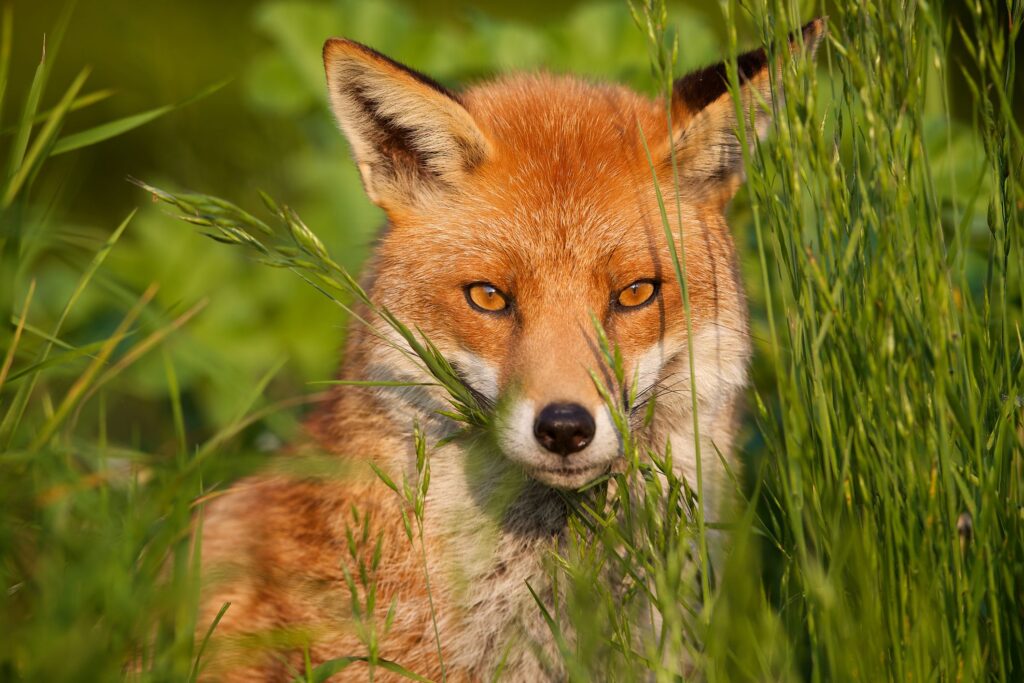What Do Foxes Eat?
Introduction
Foxes are fascinating and adaptable creatures found across the globe. As omnivorous predators, they have a diverse diet that allows them to thrive in a variety of habitats. Understanding the dietary preferences and foraging behaviors of these cunning animals is crucial for appreciating their role in the ecosystem and ensuring their conservation.In this comprehensive guide, we will explore the diverse range of food sources that foxes rely on, their hunting and foraging strategies, and the factors that influence their dietary choices. Whether you’re a nature enthusiast, a wildlife researcher, or simply curious about these captivating animals, this article will provide you with a wealth of information about the feeding habits of foxes.
The Omnivorous Diet of Foxes
Foxes are classified as omnivores, meaning they consume both plant-based and animal-based foods. This diverse diet allows them to adapt to a wide range of environments and take advantage of the available resources in their habitat.
Animal-Based Foods
Foxes are skilled hunters and opportunistic predators. Their diet primarily consists of small mammals, such as:
- Rodents (e.g., mice, voles, squirrels)
- Rabbits and hares
- Birds and their eggs
- Insects and other invertebrates
- Amphibians and reptiles
- Carrion (dead animals)
Foxes use their keen senses of hearing and smell to locate their prey, and their sharp teeth and claws to capture and consume it. They are known for their stealth and agility, which allows them to successfully hunt a variety of small animals.
Plant-Based Foods
In addition to their animal-based diet, foxes also consume a range of plant-based foods, including:
- Fruits (e.g., berries, apples, grapes)
- Nuts and seeds
- Grasses and other vegetation
- Crops (e.g., corn, wheat)
Foxes often supplement their diet with these plant-based foods, especially during times of the year when their preferred animal prey may be scarce or difficult to find.
Foraging Strategies and Hunting Behaviors
Foxes employ a variety of foraging strategies and hunting behaviors to acquire their food. These adaptations allow them to thrive in diverse environments and take advantage of the available resources.
Opportunistic Hunting
Foxes are known for their opportunistic hunting behavior, which means they will take advantage of any available food source, regardless of whether it is an animal or a plant. They are skilled at locating and exploiting a wide range of food sources, from small rodents to discarded human food.
Nocturnal and Crepuscular Activity
Foxes are primarily nocturnal or crepuscular (active at dawn and dusk), which allows them to avoid direct competition with other predators and take advantage of the reduced activity of their prey during these times.
Scavenging and Caching
Foxes are adept scavengers, and they will often feed on carrion or leftover food from other predators. They also have the ability to cache, or store, excess food for later consumption, ensuring a reliable food source during times of scarcity.
Specialized Hunting Techniques
Foxes have developed specialized hunting techniques to capture their prey effectively. For example, they may use their acute hearing to locate the movements of small rodents under the snow, or they may employ a “pouncing” technique to catch birds and other fast-moving prey.
Factors Influencing Dietary Preferences
The dietary preferences of foxes can be influenced by a variety of factors, including:
Habitat and Ecosystem
The availability and abundance of different food sources can vary depending on the specific habitat and ecosystem in which the foxes reside. Foxes living in urban or suburban areas may have access to different food sources than those living in rural or wilderness areas.
Seasonal Changes
The availability of certain food sources can fluctuate throughout the year, leading foxes to adjust their dietary preferences accordingly. For example, during the summer months, they may rely more heavily on fruits and berries, while in the winter, they may focus more on small mammals and carrion.
Individual Preferences and Adaptations
Individual foxes may develop preferences for certain food sources based on their personal experiences, hunting skills, and adaptations. Some foxes may specialize in hunting a particular type of prey, while others may be more generalized in their dietary preferences.
Human Influence
In areas where foxes coexist with humans, their dietary choices may be influenced by the availability of human-provided food sources, such as pet food, garbage, or agricultural crops. This can lead to changes in their foraging behavior and potentially increase conflicts between foxes and humans.
Conservation Considerations
Understanding the dietary habits of foxes is crucial for their conservation and the management of their populations. By recognizing the factors that influence their food choices, wildlife biologists and conservation organizations can develop more effective strategies to protect these animals and their habitats.
Habitat Preservation
Ensuring the availability of diverse food sources and suitable hunting grounds is essential for the long-term survival of fox populations. Protecting and restoring natural habitats can help maintain a balanced ecosystem and support the dietary needs of these adaptable predators.
Mitigating Human-Wildlife Conflicts
In areas where foxes and humans coexist, it is important to address any conflicts that may arise due to the availability of human-provided food sources. Educating the public about proper waste management and discouraging the feeding of wild foxes can help minimize these conflicts and promote coexistence.
Monitoring and Research
Ongoing research and monitoring of fox populations, their dietary preferences, and the factors that influence their feeding behaviors can provide valuable insights for conservation efforts. This information can help guide management decisions and inform policies that protect both foxes and their ecosystems.
Conclusion
Foxes are remarkable and adaptable animals that have evolved to thrive on a diverse range of food sources. From small mammals and birds to fruits and vegetation, these omnivorous predators have the ability to exploit a wide variety of resources in their environment. By understanding the dietary preferences and foraging strategies of foxes, we can better appreciate their role in the ecosystem and develop effective conservation strategies to ensure their long-term survival.
FAQ
- What are the main food sources for foxes?
- Foxes are omnivores and their diet consists of both animal-based and plant-based foods. Their primary food sources include small mammals, birds, insects, fruits, and vegetation.
- How do foxes hunt and forage for their food?
- Foxes employ a variety of hunting and foraging strategies, including opportunistic hunting, nocturnal and crepuscular activity, scavenging, and specialized hunting techniques like pouncing.
- Do foxes have any specialized adaptations for their diet?
- Foxes have developed acute senses of hearing and smell, as well as sharp teeth and claws, which allow them to effectively locate, capture, and consume a wide range of prey.
- How do seasonal changes affect the dietary preferences of foxes?
- The availability of different food sources can fluctuate throughout the year, leading foxes to adjust their dietary preferences accordingly. For example, they may rely more on fruits and berries during the summer and focus more on small mammals and carrion in the winter.
- Can human influence affect the dietary choices of foxes?
- Yes, in areas where foxes coexist with humans, their dietary choices may be influenced by the availability of human-provided food sources, such as pet food, garbage, or agricultural crops. This can lead to changes in their foraging behavior and potentially increase conflicts between foxes and humans.
- Why is understanding the dietary habits of foxes important for their conservation?
- Understanding the dietary habits of foxes is crucial for their conservation and the management of their populations. It helps wildlife biologists and conservation organizations develop more effective strategies to protect these animals and their habitats.
- How can habitat preservation and management help support the dietary needs of foxes?
- Ensuring the availability of diverse food sources and suitable hunting grounds is essential for the long-term survival of fox populations. Protecting and restoring natural habitats can help maintain a balanced ecosystem and support the dietary needs of these adaptable predators.
- What are some ways to mitigate human-wildlife conflicts related to fox feeding?
- Educating the public about proper waste management and discouraging the feeding of wild foxes can help minimize conflicts and promote coexistence between foxes and humans.
- How can ongoing research and monitoring of fox populations contribute to their conservation?
- Monitoring fox populations, their dietary preferences, and the factors that influence their feeding behaviors can provide valuable insights for conservation efforts. This information can help guide management decisions and inform policies that protect both foxes and their ecosystems.
- Are there any specific dietary preferences or adaptations that vary among different fox species?
- While the general dietary preferences of foxes are similar across species, there may be some variations in their specific food sources and hunting strategies based on their geographic location and the unique characteristics of their habitat.
Table of Fox Diet
| Food Source | Examples |
|---|---|
| Small Mammals | Mice, voles, squirrels, rabbits, hares |
| Birds | Eggs, nestlings, adult birds |
| Insects and Invertebrates | Beetles, crickets, grasshoppers, worms |
| Amphibians and Reptiles | Frogs, lizards, snakes |
| Carrion | Dead animals |
| Fruits | Berries, apples, grapes |
| Nuts and Seeds | Acorns, nuts, grains |
| Vegetation | Grasses, leaves, roots |
| Human-Provided Food | Pet food, garbage, agricultural crops |
Wikipedia Link
Vulpes (genus): https://en.wikipedia.org/wiki/Vulpes



